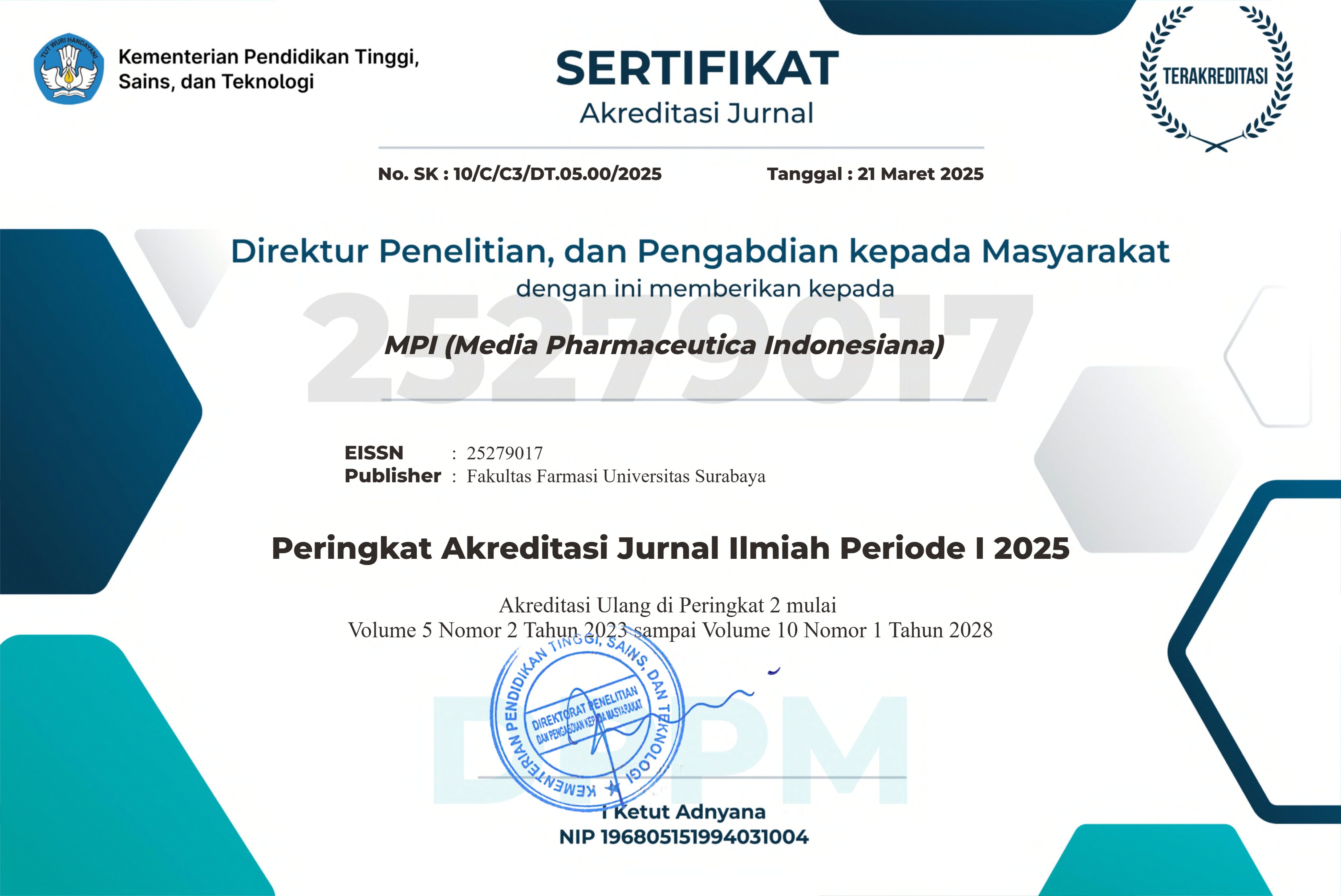Pengaruh Variasi Konsentrasi Zeolit sebagai Builder Agent terhadap Karakteristik Deterjen Cair
 Abstract Views:
875 times
Abstract Views:
875 times
 PDF Downloads:
1414 times
PDF Downloads:
1414 times
Abstract
This study aimed to determine the effect of various concentrations of zeolite as a buider agent in liquid detergent. Zeolite was synthesized from rice husk ash using solution to gel (sol-gel) method, followed by hydrothermal and then characterized by X-Ray Diffraction (XRD). The synthesized zeolite was then formulated into liquid detergent with sodium lauryl sulfate, glycerin, citric acid, colouring agent, parfume, and three concentrations of zeolite, i.e.: 15% (F1), 20% (F2), and 25% (F3). Liquid detergent was prepared by mixing process using stirrer. The characterizations of liquid detergents were including pH, viscosity, specific gravity, foaming power, foam stability, and detergency power. The XRD showed that the zeolite was type-A zeolite. Moreover, the characterization showed that zeolite with varying concentrations tend to influence in pH, viscosity, and detergency power but relatively similar in specific gravity, foaming power, and foam stability. The result indicated that the detergents with zeolite have better cleaning ability than the control (without builder) and the comparator detergents (with STPP builder). The higher the concentration of zeolite, the higher the detergency power. Therefore, F3 was recommended as formula of detergent with the best detergency power.
Downloads
Articles published in MPI are licensed under a Creative Commons Attribution-ShareAlike 4.0 International (CC BY-SA) license. You are free to copy, transform, or redistribute articles for any lawful purpose in any medium, provided you give appropriate credit to the original author(s) and MPI, link to the license, indicate if changes were made, and redistribute any derivative work under the same license.
Copyright on articles is retained by the respective author(s), without restrictions. A non-exclusive license is granted to MPI to publish the article and identify itself as its original publisher, along with the commercial right to include the article in a hardcopy issue for sale to libraries and individuals.
By publishing in MPI, authors grant any third party the right to use their article to the extent provided by the CC BY-SA license.

 DOI:
DOI:










